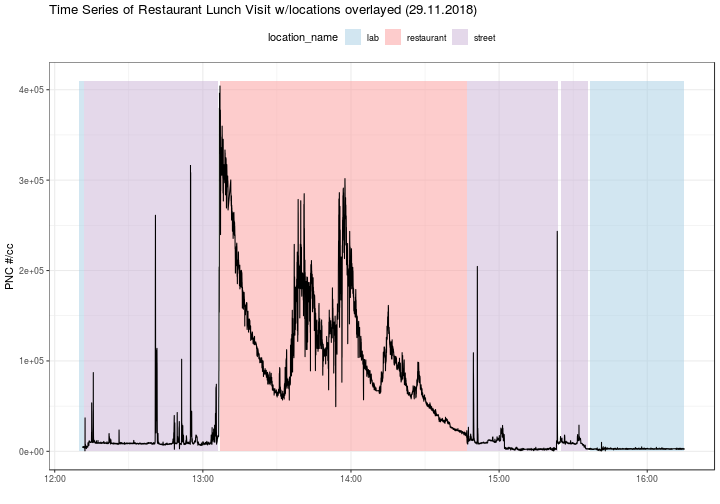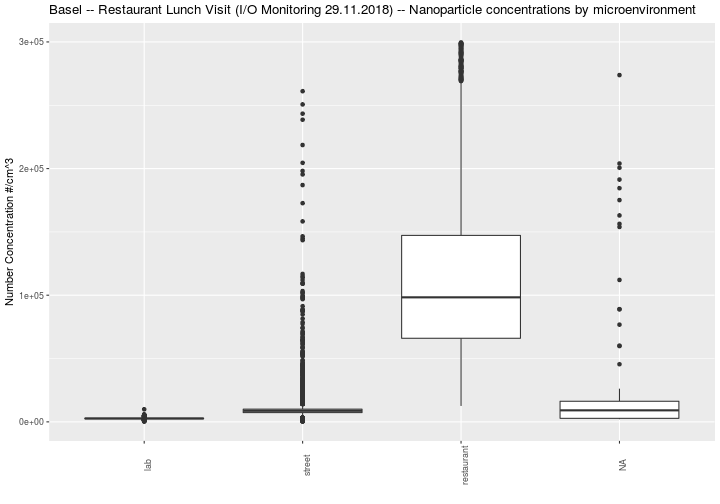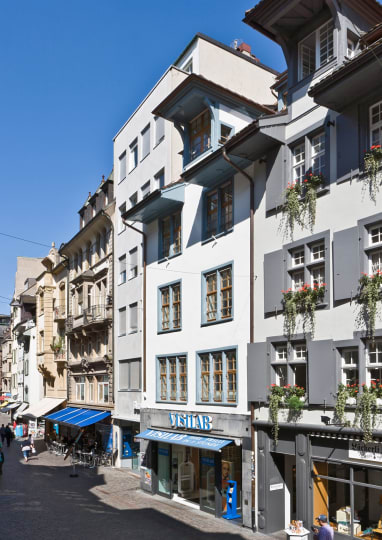Basel – Restaurant Lunch Visit
Personal exposure to nanoparticles in the course of a mid-week lunch
The occasional lunch get-together with an old friend to share recent news and exchange life experiences–Wonderful! A quintessential aspect of family life in Switzerland where carefully planned routines leave evenings and weekends less flexible for one-on-one discussion.
But, unfortunately, air quality in many restaurants is not well regulated; therefore, depending on your choice, you and your friend(s) can experience your most significant daily exposures over lunch. Here I document a visit to one of the popular lunch restaurants along Gerbergasse close to Barfuesserplatz in Basel, Switzerland. Without identifying it outright, I will just say that it is a two-story restaurant in a typical old building in the city center of this medium-sized city. The microenvironments visited during sampling include the lab, mostly neighborhood streets, and the restaurant. While walking outside, there was certainly traffic and occasional smokers. The minidisc instrument samples at 1-second resolution and is sensitive enough to detect very local events such as vehicle exhaust plumes or cigarette puffs.
Here is the time-series of the outing:

And here is a synopsis by microenvironment:

As expected, and visible in the above time-series, there are occasional peaks in the outdoor urban environment due to either vehicular exhaust, smoke from passersby, or a number of other possible local sources (including restaurant emissions). The highest levels were however clearly and consistently within the restaurant: levels well above 50,000 particles per cubic centimeter for most of our visit. And on average about 100,000 particles/cm3, which is some 20x the average non-smoking household levels of 5,000 particles/cm3. If we assume that levels at work and at home average around 5,000, and outdoor commute levels are around 10,000 for 60 minutes, then the 1 hour and 40 minute lunch would represent almost 60% of that day’s total daily exposure to nanoparticles. Not insignificant. Of course, the high levels encountered are not necessarily typical of all restaurants. The levels vary considerably depending on type of cuisine, but likely even more importantly as a result of the layout of the establishment; the level of separation of the kitchen areas from the dining areas; the existence of good ventilation/ducting of cooking emissions; ventilation in the dining areas; etc.
If you are interested in additional results, please feel free to leave a comment or contact us via email.
